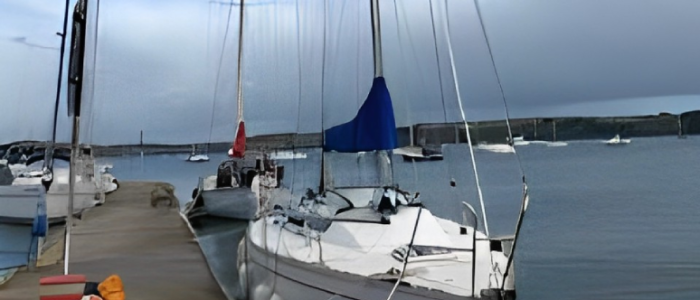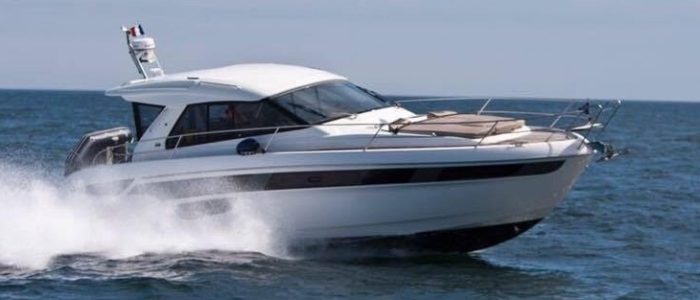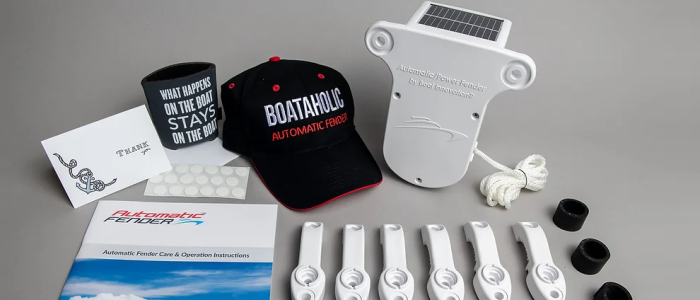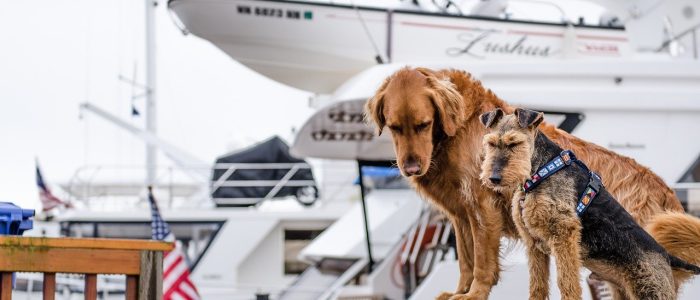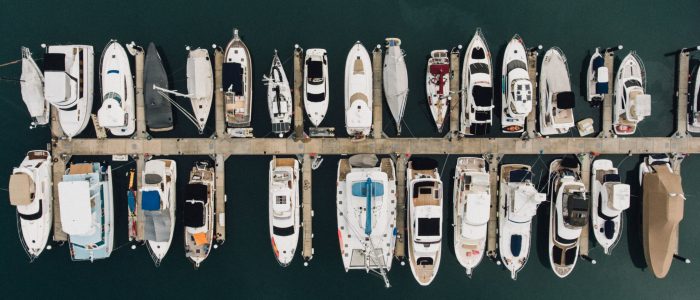You have your nice boat – but are faced with the problem of where to put it.
If you have a large boat, then you have no choice but to use a marina or mooring. However, for boats up to, say, 25 or 26 feet, then storing your boat on a trailer is a very viable option. Most small boats, RIBs and dinghies can easily and safely be stored and transported on a properly constructed trailer.
So – what are the advantages and disadvantages of a trailer?
The good news
Let’s look at cost first. A good, new, trailer for a 16 footer boat costs about £2,500. The marina berthing fees are typically about this – except you have to pay them every year. The savings on marina fees is like getting 100% interest on your investment! That’s a great financial incentive.
If you want to do any work on your boat, storing it at home on the trailer is much more convenient than having to traipse down to the marina. I know from bitter experience that having gone down to the marina, you often don’t have the right tool with you to finish the job
A trailer means that you don’t have to keep the boat in the water, and can give it a freshwater wash-down after every trip. This keeps the hull in great condition. It also means that you don’t have to antifoul the hull – giving you another annual financial saving.
Having the boat at home means that you can go to whichever part of the country you wish – you are not tied to your usual marina. All you need is a suitable launching ramp or slipway. There are many across the country, and the public ones are free of charge. Websites such as Boatlaunch list suitable sites in the UK and near Europe. Clicking on the map in the locality you want brings up detailed information on each slipway and its suitability for different types of boat.
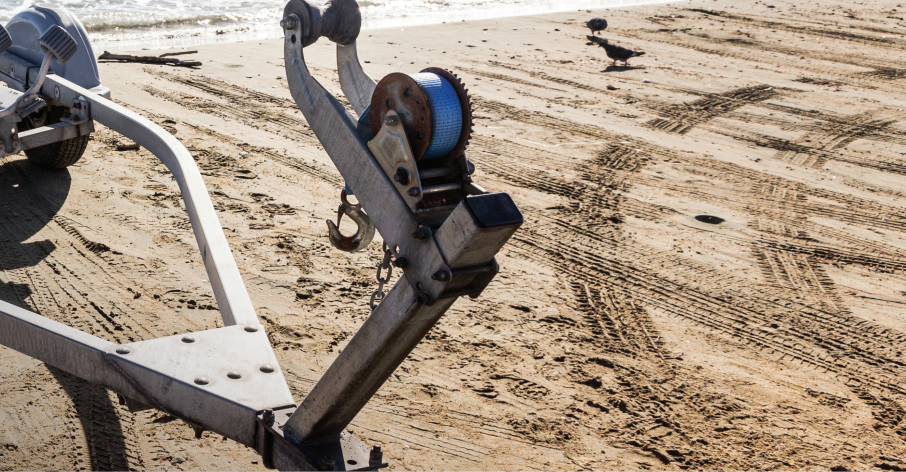
Disadvantages
Of course, you need four essentials – a boat small enough to be trailed, the trailer itself, a car capable of towing the trailer and boat and finally somewhere (on your driveway or elsewhere) to store them. If you don’t have these then unfortunately a trailer option is not viable.
Size matters
Choosing the right size of trailer for your boat is important.
Trailers are typically suitable for everything from a small sailing dinghy right up to a 25 or 26 footer. They are not usually viable for sailing yachts with a deep keel. You can of course get a trailer for small deep keel boats, but you then usually have to launch them via a crane, rather than a ramp – and the cost of cranage negates any cost savings.
The size and weight of the boat determines the size of trailer you need. You need to take account of the LOA (length overall), plus any outboards.
Weight matters
The relevant weight is the weight of the boat dry, plus the weight of fuel, freshwater and blackwater on board, plus all the ‘essential’ bits and bobs that seem to get crammed into boats. Heavier boats may require a twin-axle trailer.
The trailer does not have to have brakes if the weight of the gross trailer weight is less than 750kg or half the towing vehicle’s kerb weight – whichever is less. The full set of rules are complex. Go Earth can assist in any sizing questions you may have. Just contact us, and we will try to help.
Adjustability
A key element when finding a suitable trailer is adjustability. It has to fit your boat – and continue to fit your boat as you load and unload it. There are several elements to this.
Firstly as you load the boat, the rollers should automatically adjust to the changing profile of your boat’s hull.
Indespension trailers do this by their swing axle method so that the change in the bow-stern dimensions are covered. (see photo) Then the change in the portstarboard dimension (i.e. the keel angle) is covered by the pivoting of the rollers arms (see photo). Indespension trailers pioneered this swing axle design (see the video below for a demonstration) which is a key feature of their boat trailers.
In addition, for larger adjustability, all the main components should be attached to the framework by U-bolts. Then you can very easily adjust all the dimensions by unscrewing the nuts, moving the U-bolts, and then re-tightening. Indespension, again, have majored on the concept of completely bolted trailers. (The bolts are actually rectangular to fit the shape of the components, rather than ‘U’ shaped, but everyone calls them U-bolts!) This provides both adjustability and ease of replacing any damaged components.
Some boat manufacturers will try to sell you a trailer when you are buying a new boat. That’s fine as far as it goes – but there is a catch. The trailer is often built just for that model of boat, and often has no or limited adjustability. What happens if, when you eventually sell the boat, the new purchaser does not want a trailer if, for example, they have a berth somewhere? You would be left with an almost useless trailer. Our general recommendation is to purchase a trailer with a wide range of adjustability such as the Indespension range.
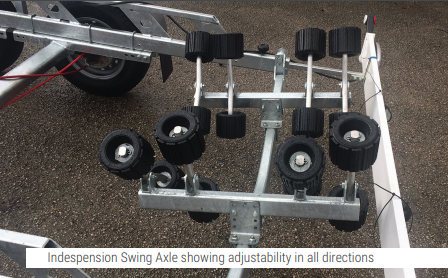
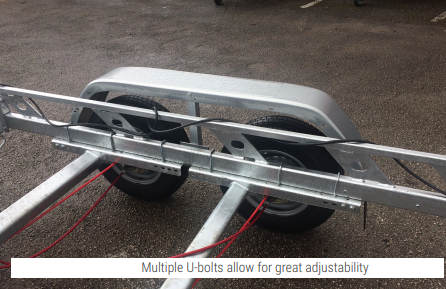
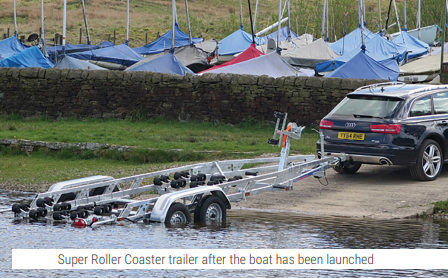
Size and weight matters – again
You have your boat. You have the right trailer. Now you need a suitable car or other towing vehicle.
Most cars can take a tow bar at the rear. Notable exceptions include Porsche 911s, and a few other specialist cars. The towing weight of a car is defined by the manufacturer. It is sometimes called the ‘gross train weight’, and may be in the owner’s handbook or on the VIN plate on the car. You need to check the combined weight of the boat, trailer, and all the various bits of boating paraphernalia that you will throw into the boat.
You must check for yourself that your particular model has the required towing capacity.
Protecting your hubs
The trailer hubs are subject to repeated immersion in sea water. This is really good at corroding them! Indespension offers two great solutions. Their brake flushing kit lets you easily flush away the saltwater with freshwater; and their hub-savers protect the bearings in the hubs.
Pretty colours
You may be tempted by the sight of a brightly coloured painted trailer. Our advice is simple. Don’t be. Even the best paint will eventually wash off in saltwater, especially if it is scratched or scraped at any time. The best solution is a fully galvanised trailer, like those provided by companies such as Indespension. We admit that a painted trailer may look prettier – but only in the short term.
Weighty legal matters
Oddly, the weight you can tow depends in part when you passed your car driving test. If you passed on or after 1 January 1997 you can:
- drive a car or van up to 3,500kg maximum authorised mass (MAM) towing a trailer of up to 750kg MAM
- tow a trailer over 750kg MAM as long as the combined MAM of the trailer and towing vehicle is no more than 3,500kg
MAM is the limit on how much the vehicle can weigh when it’s loaded. You have to pass the car and trailer driving test if you want to tow anything heavier.
If you passed your car test before 1 January 1997 you’re usually allowed to drive a vehicle and trailer combination up to 8,250kg MAM. For more details see the Government website.
Summary
Size, weight, cost savings, and the complexity of the rules are the main things to consider when buying a trailer. Get all those right and then enjoy your boating.
